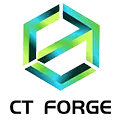Checklist for Forging & Casting Design Conference
On this page
A design conference is needed for a deal. During this process, purchasers and component manufacturers should reach a consensus on the following information. This should be done prior to the set of final decision on design and specifications of products. They are critical for identifying methods to improve trading volumes and lower costs. The following is the checklist for forging and casting design conference.
First. Identification.
1. Names of components.
2. Sheet numbers.
3. Part numbers.
4. Corporate name and address.
5. Name and title of the person launching inquiries or orders.
6. End use.
Second. Drawing and marks.
The drawing is about the general manufacturing information of products while the marks is applied for better identification.
1. Names of components.
2. Sheet numbers.
3. Part numbers.
4. Position of locating points and chucking bosses for later machining processes.
5. Surfaces that will be undergo machining process
6. Necessary finish allowance.
7. Sorts of finishing processes to be applied.
8. Positions and character of part numbers and trademarks (raised or indented numbers and letters).
9. Drawing identification to release ranks or serial numbers.
10. Location, analysis and specification number for the test bar.
11. Thermal treatment (if necessary).
Third. Quantity information.
1. The total number of pieces for initial orders. .
2. Quantity of pieces per release.
3. Approximated quantity requirements per year.
4. Any restrictions on adhibition of FIA quantity tolerances (Special quantity tolerances are normally quoted respectively).
Fourth. Delivery schedules.
1. Initial delivery dates and quantity of goods (in pieces).
2. Succeeding arrangements (quantity requirements per delivery).
3. Ending dates that set previously.
Fifth. Service data.
1.Maximum design pressure (ksi).
2. Possible wear or abrasion.
3. Existing stresses, such as influence, periodic loading or pressures.
4. Operating environment (corrosive media, maximum operating temperatures).
Sixth. Surface conditions.
1. Surfaces that will undergo machining processes (marked on drawing).
2. Types of finish machining (polish, plating, paint, etc).
3. Alternate quotations for products undergoing various machining process.
Seventh. Information of materials.
1. Names, components and specifications of metals.
3. Alternative materials.
Eight. Information of properties.
1. Standard Specifications (further demands and/or exceptions).
2. The smallest tensile strength (ksi)
3. Rigidity (maximum and minimum at different levels).
4. Other available natures.
Ninth. Information on thermal treatment.
1. Character of thermal treatment.
2. Nature grades needed.
Tenth. Information on dimensional tolerances.
1. Allowance guidelines (FIA).
2. Critical dimensions where special tolerances are used.
Eleventh. Special inspection requirements.
1. Means needed for examination (dye-penetrant, magnetic powder and sonic ways )
2. Customers’ incoming inspection on integrity, purity, statistic analysis, AQL or others).
3. Examination from government.
4. First-piece inspection and sample inspection.
Twelfth. Shipping information.
1. Particular packing standard of requirements.
2. Preferred Carriers.
The above mentioned twelve pieces of information are mainly discussed over production and delivery. Nevertheless, more factors should be considered in actual transactions, such as government policy, preferential clause, custom duties, weather conditions, insurances, payment methods etc.

